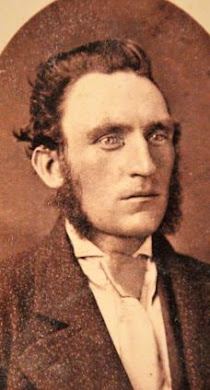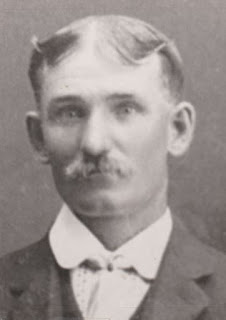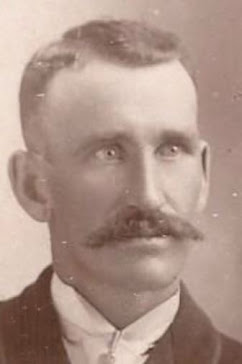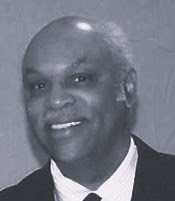#82 AUDITIONING AS SANTA?
BEARDS & MUSTACHES---FACIAL FASHION OF MALE FAMILY
The main difference between a beard and a mustache lies in where the facial hair grows and how it’s styled:
1.
Location on the Face:
o Mustache: A mustache is facial
hair that grows exclusively on the upper lip, between the nose and the mouth.
o Beard: A beard refers to
facial hair that grows on the chin, cheeks, jawline, and sometimes the neck.
Beards can also include the mustache area if not trimmed separately, but they
can exist without a mustache.
2.
Styles and Types:
o Mustache Styles: Mustaches can be
styled in various ways, like the handlebar, pencil, walrus, chevron, or
horseshoe. Each style is typically limited to shaping and grooming the upper
lip hair.
o Beard Styles: Beards vary in length,
thickness, and shape, from short stubble and goatees to full beards and long,
bushy types. Some beard styles incorporate a mustache, while others do not.
3.
Cultural and Historical Meanings:
o Mustache: Often symbolizes
distinct styles and trends, sometimes representing refinement, rebellion, or
specific periods in fashion (like the pencil mustache of the 1930s or the
handlebar of the Victorian era).
o Beard: Historically, beards have represented wisdom, masculinity, strength, and religious devotion across different cultures and periods.
The history of men's beards is as ancient as humanity
itself, tracing back to the dawn of civilization, where it served as a sign of
strength, wisdom, and even spiritual power. The role of facial hair has shifted
countless times across cultures and eras, from symbolizing raw masculinity to
serving as a means of rebellion and self-expression
Prehistoric and Ancient Times
In prehistoric societies, beards weren’t merely a matter of
choice—they were a necessity. Early humans grew facial hair for protection,
warmth, and as a shield during combat. Thick beards helped soften the impact of
blows and bites, and they also kept the face warm during harsh, cold winters. As
civilizations began to form, beards took on a new significance. In ancient
Mesopotamia, beards were meticulously groomed and styled, often using tongs and
oils. Sumerian and Babylonian men braided and adorned their beards with jewels,
displaying wealth and status. In ancient Egypt, Pharaohs—both male and
female—wore false beards as a sign of divine rule. These beards were often
crafted from metal and fastened with straps, symbolizing their status as gods
on Earth.
Greece and Rome: The Philosophical Beard
In ancient Greece, beards became associated with wisdom and
masculinity. Greek philosophers like Socrates and Plato wore
long beards as symbols of intellectual depth and rejection of worldly vanity.
To be clean-shaven in Greece was often seen as vain or effeminate. However,
Alexander the Great changed the face of grooming for Greek men around 345 BCE.
He ordered his soldiers to shave their beards to prevent enemies from grabbing
them in battle, setting off a trend that spread across the Hellenistic world. The
Romans, inheriting Greek culture, were initially pro-beard. But by the 2nd
century BCE, influenced by Greek trends, they began to prefer a clean-shaven
look, associating it with discipline and civility. Yet, as the Roman Empire expanded, beards
returned briefly as a symbol of mourning or during philosophical and cultural
movements.
The Middle Ages: Beards of Faith and Authority
In the Middle Ages, beards became highly symbolic in both
Western and Eastern cultures. In Christian Europe, a beard was seen as a mark
of religious piety. The Old Testament held numerous references to beards as a
symbol of manhood and divine blessing, and a full beard was often required for
high-ranking clergy.
Knights in medieval Europe wore beards as an emblem of
honor and chivalry, but beards also began to have a certain "wild"
connotation. During the Crusades, European soldiers encountered Muslim warriors
with beards, leading some European societies to see the beard as an exotic or
even rebellious statement.
Meanwhile, in the Islamic world, beards were highly
revered. Following the Prophet Muhammad's teachings, Muslim men were encouraged
to grow beards as a sign of faith and respect. In both Christianity and Islam,
beards were thus seen as a physical manifestation of moral and spiritual
devotion.
The Renaissance and Enlightenment: Clean Shaven and
Civilized
By the Renaissance, European men largely abandoned beards,
favoring clean-shaven faces to signify sophistication and modernity. In the
16th century, however, King Henry VIII of England popularized beards once more,
even imposing a "beard tax." His daughter, Elizabeth I, later
reinstated this tax, which required bearded men to pay a fee based on the
length of their beard; this regulation made the beard a status symbol
again—only those who could afford the tax could maintain a beard.
The Enlightenment brought another shift, and facial hair
fell out of fashion in favor of powdered wigs and clean-shaven faces. This
change was influenced by Enlightenment ideals, which equated a clean-shaven
face with rationality, reason, and civility.
The Victorian and Edwardian Eras: Beards as a Symbol of
Empire
In the 19th century, (the time of most of my photos below) beards came roaring back, coinciding
with the rise of the British Empire. Victorian men, inspired by explorers and
military heroes who often sported beards, began to grow their facial hair as a
sign of rugged masculinity and dominance. Figures like Charles Darwin, who wore
a large, untamed beard, made the look synonymous with intellectual and
scientific pursuit. The beard became almost a uniform for Victorian statesmen,
scientists, and industrialists, representing strength, moral fiber, and
authority.
Across the Atlantic, American men also embraced beards
during the Civil War era, with figures like Abraham Lincoln helping to
popularize the look. Beards, mustaches, and mutton chops became popular among
men as a mark of maturity and strength.
The 20th Century: Decline and Revival
In the early 20th century, beards once again fell out of
favor. World War I and the advent of gas masks necessitated a clean-shaven face
for soldiers, making shaving more practical and hygienic. The trend continued
through World War II, and for much of the 1950s and '60s, clean-shaven faces
were the standard in the Western world, reflecting ideals of cleanliness and
professionalism.
However, by the 1960s, beards experienced a revival,
largely influenced by the countercultural movements of the era. The beatniks,
hippies, and anti-establishment figures embraced beards as a symbol of
rebellion against the mainstream. Rock musicians, artists, and intellectuals of
the time saw beards as an expression of freedom, creativity, and political
nonconformity.
Modern Times: The Beard Renaissance
Today, beards have reached unprecedented popularity and
acceptance. Men grow beards for various reasons—some to signify masculinity or
style, others for cultural or religious reasons. The contemporary beard has
also diversified in style, from stubble to full lumberjack beards, reflecting a
shift toward individualism. Grooming products and beard care have also become a
massive industry, with products catering to every imaginable beard type and
style.
In the age of social media, the beard has become an
accessory of personal branding, with influencers and celebrities setting trends
in grooming. Yet, beards also carry a sense of continuity, linking men back to
ancient traditions, philosophies, and practices that span thousands of years.
Beards, it seems, are here to stay, embodying a history as
rich and varied as the cultures that wear them. Whether as a mark of wisdom,
rebellion, style, or identity, the beard remains a powerful symbol of what it
means to be human.
AND THE BEST BEARD IN MY FAMILY GOES TO.....
MUSTACHES
The history of mustaches is filled with drama, style, and
symbolism. This compact piece of facial hair has had a sweeping influence
across cultures, from signifying rank and valor to representing fashion
statements and even rebellion.
Ancient Beginnings: Mustaches of Distinction
The earliest depictions of mustaches date back over 2,500 years to the Iron Age, with some of the first known mustache wearers found in ancient Iran and Central Asia. Archaeologists have discovered Scythian warriors, depicted with bushy mustaches and no beards, in art and on artifacts. These warriors, fierce nomads with a formidable reputation, likely wore mustaches as a symbol of their fierce and independent spirit.
Some ancient Indian depictions of deities and warriors show mustaches symbolizing bravery and honor, a tradition that continues to hold cultural value in parts of India today.
The Middle Ages: Sign of Nobility and Power
During the Middle Ages, mustaches took on unique meanings
depending on the culture. In many parts of Europe, knights and nobles grew
mustaches as a sign of power and rank. Vikings were known to sport long, thick
mustaches paired with beards, a look that evoked their strength and wildness.
In contrast, some cultures, like medieval Japan, saw facial hair as barbaric;
therefore, samurai and noblemen were generally clean-shaven, though some
mustache styles occasionally appeared among warriors.
In the Islamic world, mustaches were carefully maintained
in line with religious teachings. According to the Prophet Muhammad’s guidance,
Muslim men were encouraged to trim their mustaches while allowing their beards
to grow, establishing a distinct look and connecting mustache grooming to a
spiritual identity.
The Renaissance: Mustache as Art
By the Renaissance, European men began to experiment with
facial hair in more artistic ways. Mustaches became a central part of elaborate
grooming styles among nobles, often paired with small pointed beards in
intricate shapes. Spanish and French men popularized the mustache-beard combo,
known as the “pencil mustache,” often styled with wax to form curls and twists.
During this period, mustaches began to take on a more
flamboyant edge. The “handlebar mustache” became popular among the aristocracy,
its long, curled ends standing as a display of both wealth and
fashion-consciousness. European mustaches at this time were not merely facial
hair—they were meticulously styled works of art, reflecting a wearer’s social
rank and sense of style.
18th and 19th Centuries: Military Influence
The Napoleonic Wars and subsequent European military
campaigns of the 18th and 19th centuries led to an explosion of mustaches as
symbols of military prowess. Napoleon Bonaparte’s troops famously grew thick,
impressive mustaches, setting a trend that quickly spread throughout Europe. In
the British Army, the mustache became a standard for cavalrymen and soldiers
stationed in India, where British officers adopted the mustached appearance of
Indian noblemen and Rajputs.
In fact, by the mid-19th century, the British Army mandated
mustaches for soldiers as a marker of distinction and bravery, and this custom
remained in place until 1916. French soldiers, German officers, and Russian
soldiers all sported variations of the mustache, each shape and style becoming
associated with national pride and valor. The “walrus” mustache, thick and
drooping, became a symbol of the imposing power of European militaries.
The Victorian Era: The Golden Age of Mustaches
The Victorian era saw the mustache flourish, reaching a
golden age where nearly every respectable gentleman wore one. With new grooming
tools like mustache wax and pomades widely available, men could maintain
elaborate mustache styles that became hallmarks of fashion and class.
Styles such as the handlebar, imperial, and chevron
mustaches became highly popular. British royals, especially King Edward VII,
sported mustaches, which made them particularly fashionable across England and
the Western world. The Victorian mustache represented dignity, civility, and
refinement, and men would often take great care to keep them perfectly groomed.
Early 20th Century: Mustaches of the Modern Gentleman
As the 20th century began, the mustache remained popular
but started to evolve. The “toothbrush” mustache, worn by Charlie Chaplin and
later associated with Adolf Hitler, became controversial after World War II.
The style, once a symbol of modern efficiency, was quickly abandoned due to its
dark associations and has rarely been worn since.
In contrast, the “pencil mustache” gained popularity in the
1930s and ’40s, a thin, precisely trimmed line worn by suave Hollywood actors
like Clark Gable and Errol Flynn. This style became the hallmark of
sophistication, representing the smooth-talking, debonair gentleman of the era.
Mid-20th Century: Decline and Rebellion
By the 1950s, clean-shaven faces were the norm in Western
society, influenced by the military standards of both World Wars. Mustaches,
once symbols of status and masculinity, were largely abandoned in favor of
smooth, modern looks that conveyed a sense of order and professionalism.
The 1960s and ‘70s, however, saw a resurgence of the
mustache as a symbol of rebellion. The “pornstache” and “fu manchu” styles were
popularized by counterculture figures, rock stars, and later by actors like
Burt Reynolds and Tom Selleck. These mustaches rejected conservative norms and
embodied the free-spirited, sometimes provocative attitudes of the era.
Modern Times: The Mustache Renaissance
Today, the mustache has seen a revival, celebrated in all
shapes and forms, from classic styles to bold, unconventional looks. The
“hipster” movement of the 2000s embraced the mustache as a retro statement,
reviving styles like the handlebar and the walrus in ironic and fashion-forward
ways.
Now, mustaches have become a versatile symbol, used as a
form of self-expression, a playful nod to past eras, and even a charitable
cause. Movember, the annual event where men grow mustaches to raise
awareness for men's health issues, has turned the mustache into a global emblem
of solidarity and philanthropy. Celebrities and athletes have embraced the
mustache as part of their look, helping to inspire younger generations to
experiment with this classic facial hair.
From ancient warriors to modern hipsters, the mustache has been a steadfast presence, adapting and evolving while remaining undeniably iconic. Whether as a mark of rebellion, fashion, or tradition, the mustache continues to tell a story that is, quite literally, written on the face of history. (credit to Chatgpt for script, edited)












































Who knew? vs
ReplyDeleteSteve’s hippy days!
ReplyDeleteWhat a wonderful way to look at family history! Deb McA
ReplyDeleteSteve, Douglas and Jim for the win!
ReplyDeleteWhat a fascinating subject! Well done.
ReplyDeleteAlways a good read, enjoyed the photos.
ReplyDelete